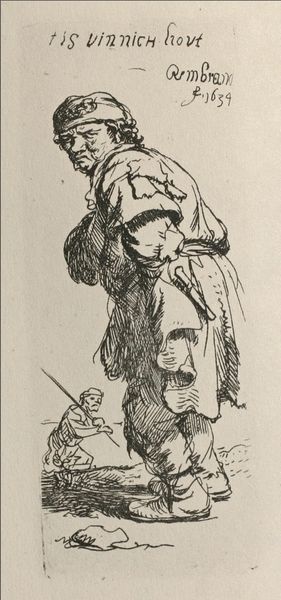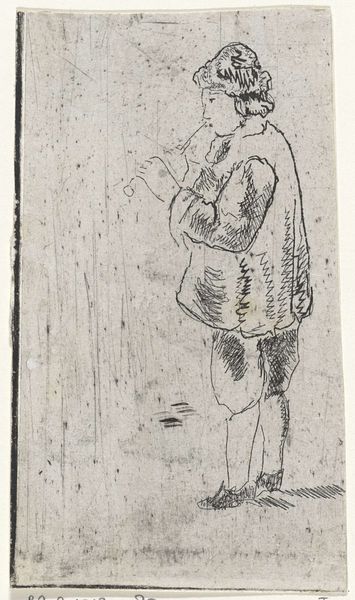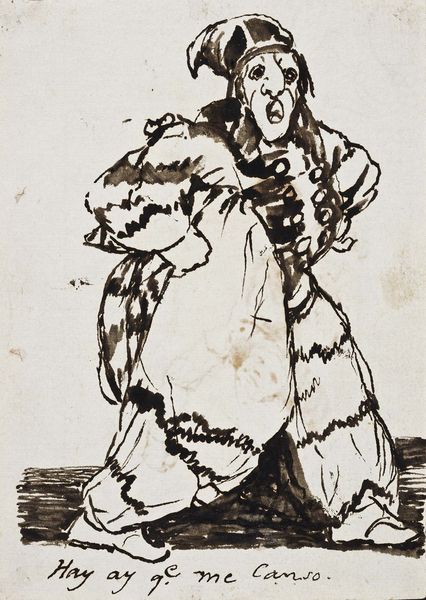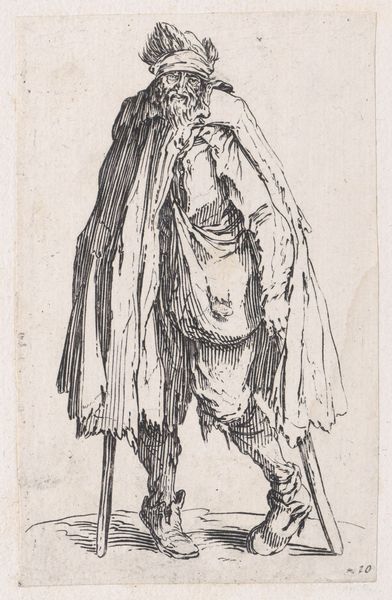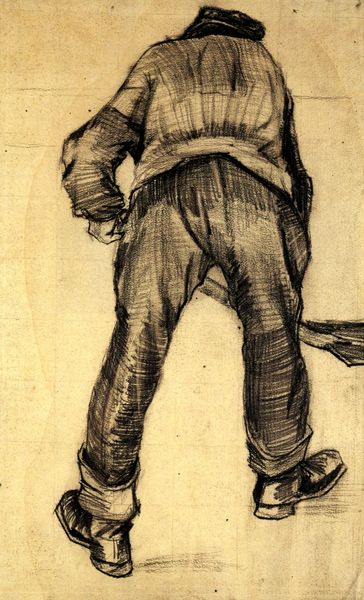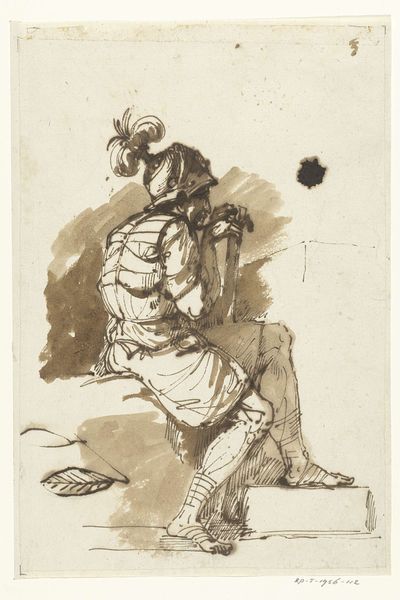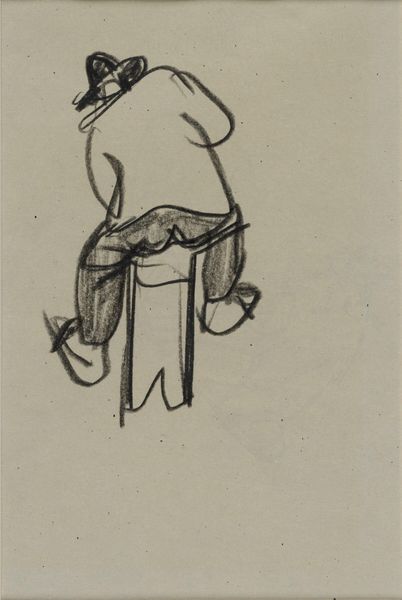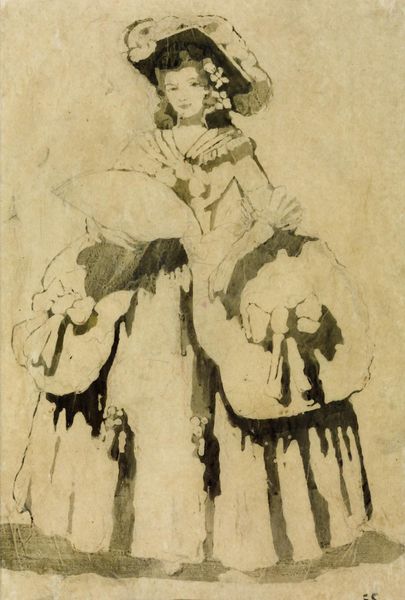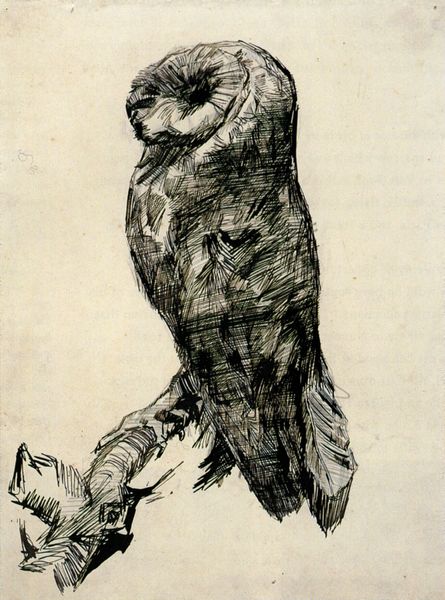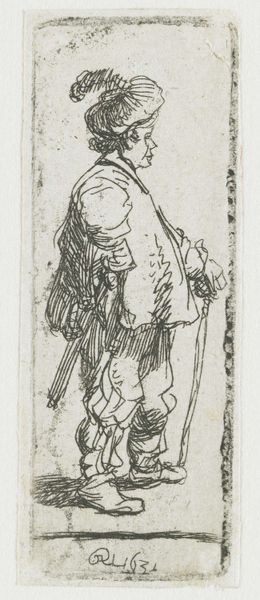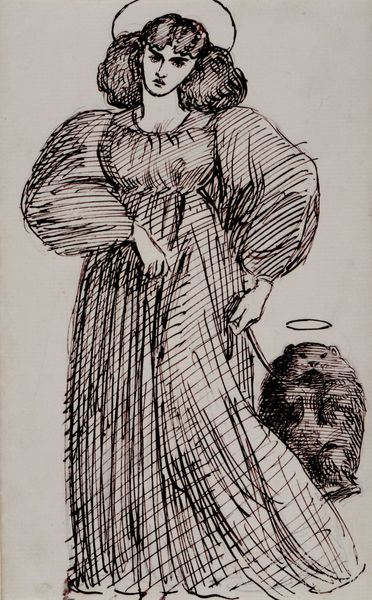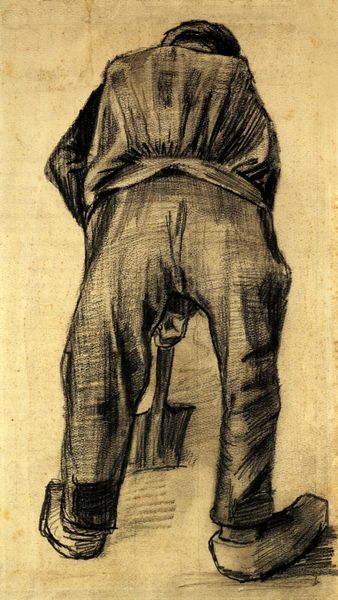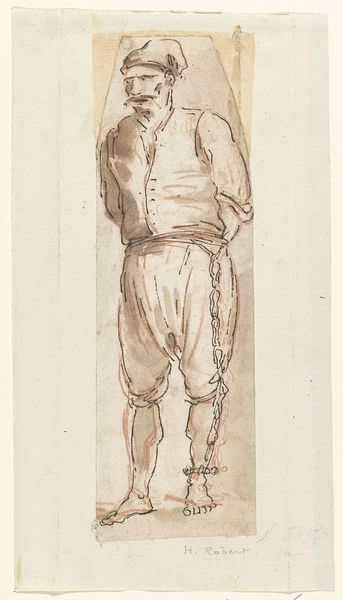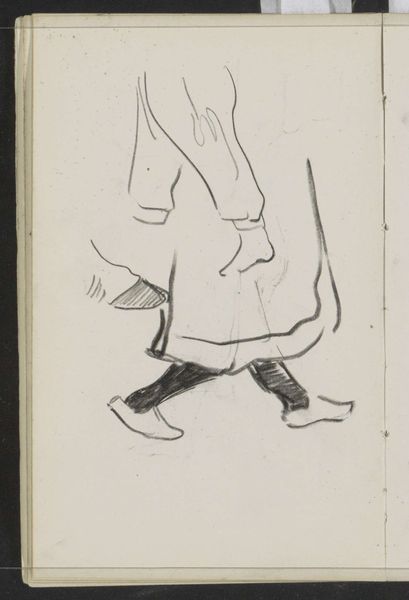
drawing, ink
#
portrait
#
drawing
#
cubism
#
figuration
#
ink
#
sketch
#
costume
#
line
#
portrait drawing
#
portrait art
Dimensions: 34 x 23 cm
Copyright: Public domain US
Curator: Picasso’s “Design of costume for 'Pulcinella',” crafted in 1920, uses ink in a primarily line-based approach to capture a figure reminiscent of commedia dell'arte. What springs to mind for you when you first encounter this portrait? Editor: There's a certain whimsical sadness about it, a vulnerability almost. The palette is muted, the lines are a little shaky – like a memory struggling to hold its form. The subject’s gesture—an open hand—feels like a plea or an offering. Curator: Interesting. Picasso's "Pulcinella" designs are more than simple sketches; they're embedded in a pivotal moment of revisiting classical forms post-war, participating in an active dialogue questioning tradition and its place in a fractured world. Picasso appropriates the Pulcinella figure, traditionally a symbol of sly wit and peasant cunning, to investigate the construction of identity, particularly masculinity, in the wake of societal trauma. Editor: Exactly. And consider Diaghilev's Ballets Russes – Picasso's collaborations weren’t just decorative; they critiqued conventional stagecraft. The costume hints at rigid structures– that black belt is practically squeezing the form!–yet also celebrates playful transgression, blurring the boundaries between high and low art. It feels radical, and the line-work is almost child-like, while conveying a powerful and mature theme of masculine fragility in that post-war context that you mentioned. Curator: Indeed. This piece embodies tensions between tradition and modernity. The institutional forces surrounding the Ballets Russes—the money, the aristocratic patronage, the sheer spectacle—directly impacted the artwork. These ballet productions served as an arena in which artists like Picasso navigated social hierarchies and explored the very politics of representation, reflecting deep ambivalence about what they represented, and to whom. Editor: The figure's face is masked, obscured, questioning the very notion of stable selfhood – particularly potent within a landscape defined by shifting cultural values and anxieties about identity, in a period that comes to terms with profound disruption. It really lingers with me. Curator: For me, examining it, I’m reminded that the surface aesthetics mask far more about Picasso's active positioning in the art world. The performance—and its associated design—were, like all theatrical gestures, potent forms of both visibility and masking, something perhaps as resonant then as now.
Comments
No comments
Be the first to comment and join the conversation on the ultimate creative platform.
